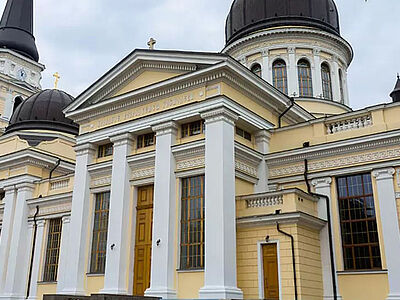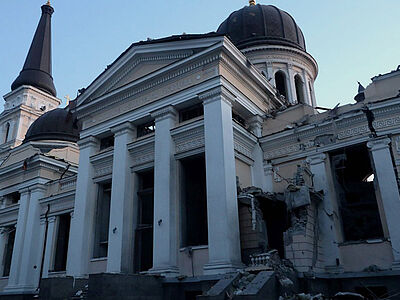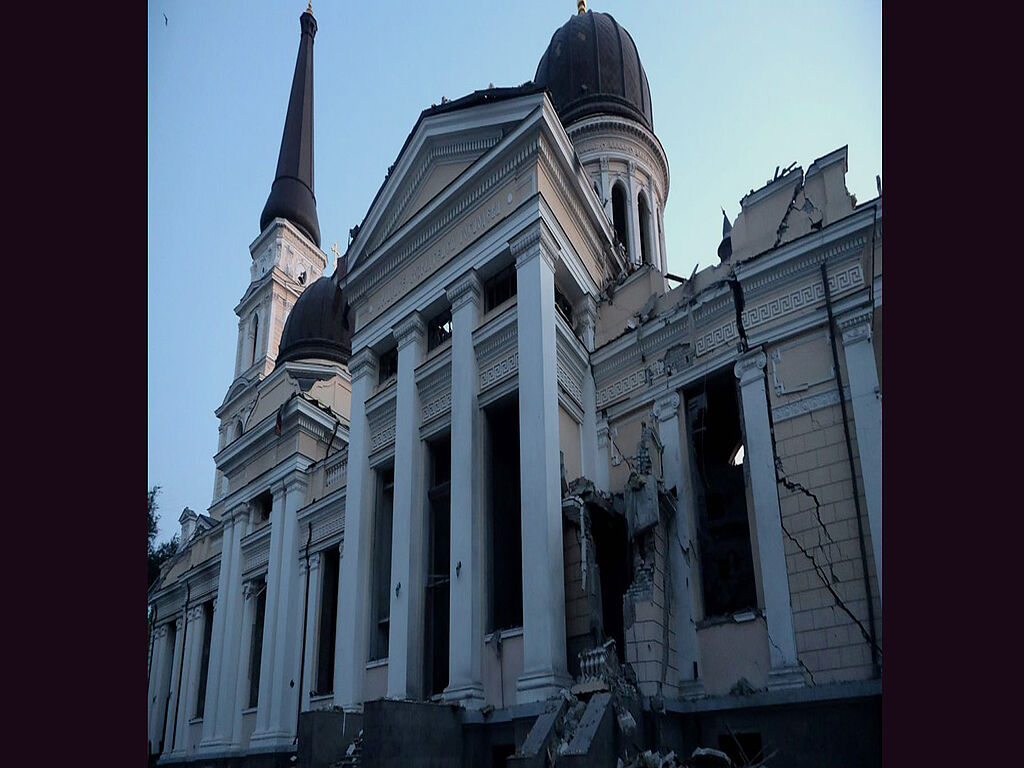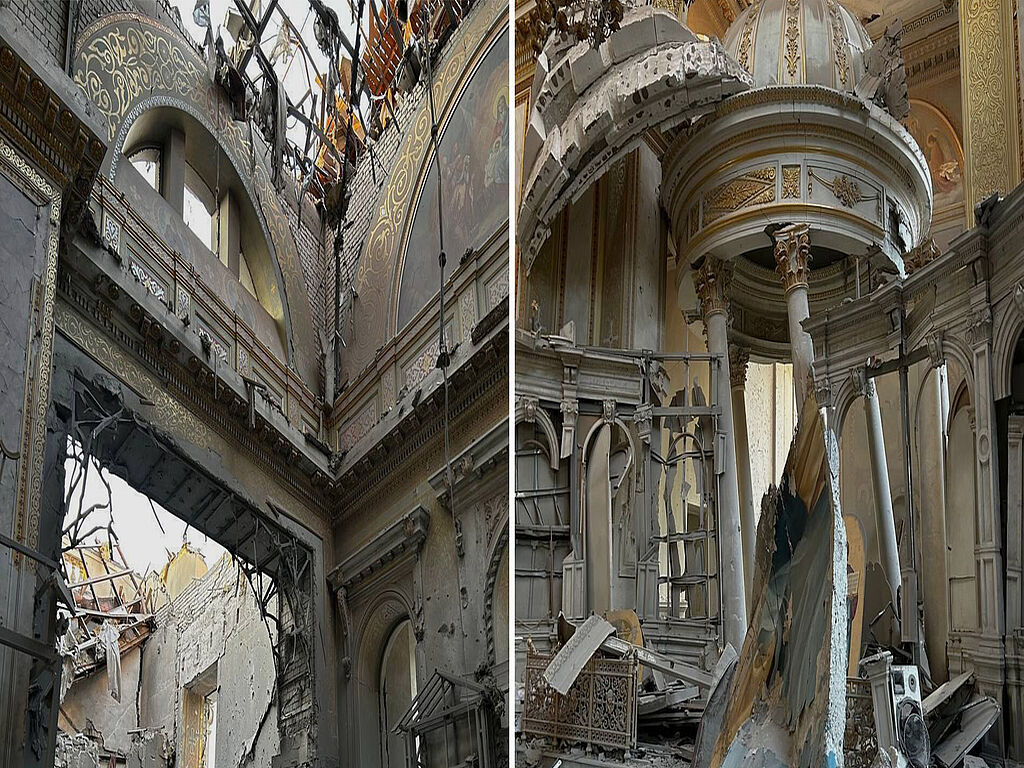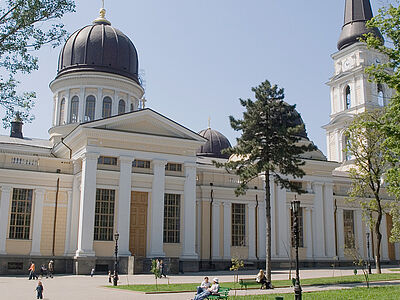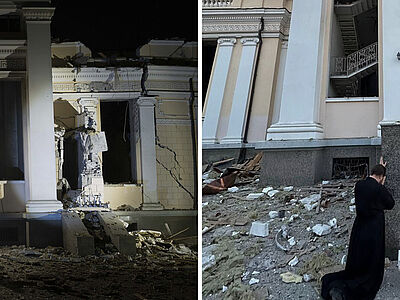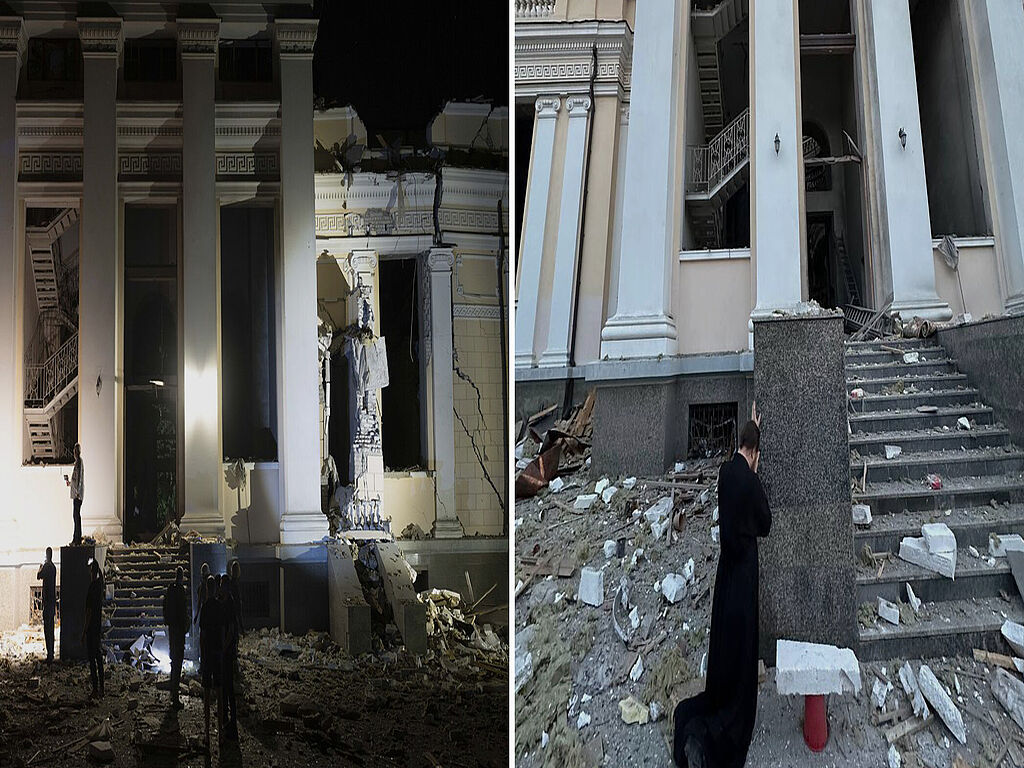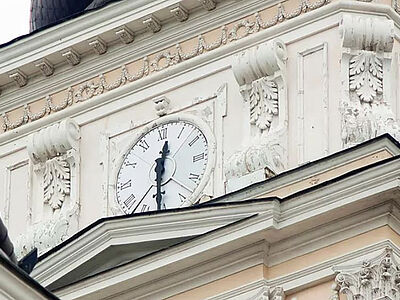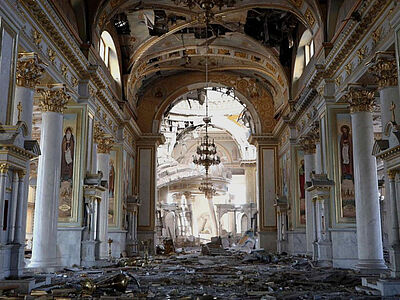Our catalogs
Personality catalog
Famous people before and after the start of the war
Personalities before and after the start of the war
View DetailsBuildings and constructions catalog
Photos of buildings and their destruction before and after the start of the war.
Buildings, structures, objects before and after the start of the war
View DetailsMonuments catalog
Monuments, works of art before and after the start of the war
View DetailsAircraft, cars and other technical means catalog
Aircraft, cars, technical means before and after the start of the war
View DetailsRussian missile strike on a cathedral in Odessa
On 23 July 2023, Russian forces launched another missile strike on Odessa during their invasion of Ukraine.
As a result of the strike, the Cathedral of the Transfiguration of the Saviour, the largest Orthodox church in Odessa, belonging to the UOC-MP, was partially destroyed. The House of Scientists and a number of other buildings in Odessa's historical centre were also damaged. A total of 44 buildings were damaged, including 29 cultural heritage monuments. As a result of the attack, 21 people were injured. Two people were killed.
On 17 July 2023, the grain deal expired and the Russian Foreign Ministry announced that the grain deal would be terminated on 18 July, without renewing the agreement, under which grain was exported from three Ukrainian Black Sea ports, including the port of Odessa. Odessa was then subjected to a series of missile attacks on consecutive days.
On 17 July 2023, there was an explosion on the Crimean Bridge. Russia called its subsequent attacks on Ukrainian ports "retaliatory strikes."
On the night of 18 July 2023, Russia attacked Odessa using Iranian Shahed drones and six Kalibr missiles launched from Russian ships in the Black Sea. The AFU Operational Command South stated that all missiles were destroyed, but their debris and blast wave caused damage to the city's harbour infrastructure and several private residences, with one person injured.
On the night of 19 July, there was another shelling of Odessa. Russia again used kamikaze drones, but this time used Kh-22 and P-800 Onyx missiles. Designed as anti-ship missiles, the Onyx missiles, due to their high speed and low altitude, proved to be extremely difficult targets for Ukrainian air defences and were virtually impossible to shoot down. The attack on 19 July damaged the Odessa port's grain and oil terminals, a tobacco warehouse, and several residential buildings. According to Ukrainian President Volodymyr Zelensky, grain destined for China was destroyed in this attack. Twelve people were injured in this attack. Zelensky called this attack "hardly the biggest attempt by Russia to hurt Odessa during the full-scale war." The Russian Defence Ministry said that the strike was carried out "on military industry facilities, fuel infrastructure and ammunition depots", while Mediazona noted that Russian propaganda in this case, as usual, tried to justify attacks on civilian facilities by calling them "military infrastructure".
The night of 20 July saw the third consecutive Russian attack on Odessa. According to the Ukrainian military, this time the Russian army fired 19 missiles and 19 kamikaze drones at Odessa and Mykolaiv, while the Ukrainian IAP destroyed 18 aerial targets out of them. At the same time, Odessa was attacked by 20 "aerial targets". According to the Ukrainian authorities, 4 people were injured and 1 person was killed in this attack. The strike resulted in a 300 square metre fire in the city centre. Buildings in the historic city centre were damaged, including the buildings of the Odessa Literary Museum and the Odessa Archaeological Museum. Ukrainian Culture Minister Oleksandr Tkachenko noted that the damaged buildings belong to the UNESCO World Heritage Site - the historical centre of Odessa. The building of the Chinese consulate in Odessa was also damaged by the Russian attack.
On 22 July 2023, UNESCO condemned attacks on cultural heritage sites, noting that just a fortnight ago one of the attacks destroyed a historic building in Lviv. UNESCO also noted the destruction of the Mykolayiv Centre for Folk Art and Art Education.
On the night of 23 July, the Russian army launched another strike on Odessa. According to the AFU, 19 missiles of 5 types were used: 5 Onyx missiles, three Kh-22, four Kalibr missiles, five Iskander-K and two Iskander-M. The AFU reported that they managed to destroy 9 missiles: four Kalibr missiles and five Iskander-K.
The attack damaged port infrastructure, at least six residential buildings, and dozens of cars. 29 cultural heritage monuments were damaged to a greater or lesser extent.
| Icon | Name | Type | Demo | Links |
|---|---|---|---|---|
| Odessa, Ukraine | image | |||
| Odessa after Russian missile attack | video | |||
| Aftermath of Odessa missile attack | video | |||
| How the Transfiguration Cathedral looks like after the Russian missile attack | video | |||
| Odessa, Ukraine | image | |||
| Odessa, Ukraine | image | |||
| Odessa, Ukraine | image | |||
| Odessa, Ukraine | image | |||
| Odessa, Ukraine | image | |||
| Odessa, Ukraine | image | |||
| Odessa, Ukraine | image | |||
| Odessa, Ukraine | image | |||
| Odessa, Ukraine | image | |||
| Odessa, Ukraine | image | |||
| Odessa, Ukraine | image | |||
| Odessa, Ukraine | image |
Date :








